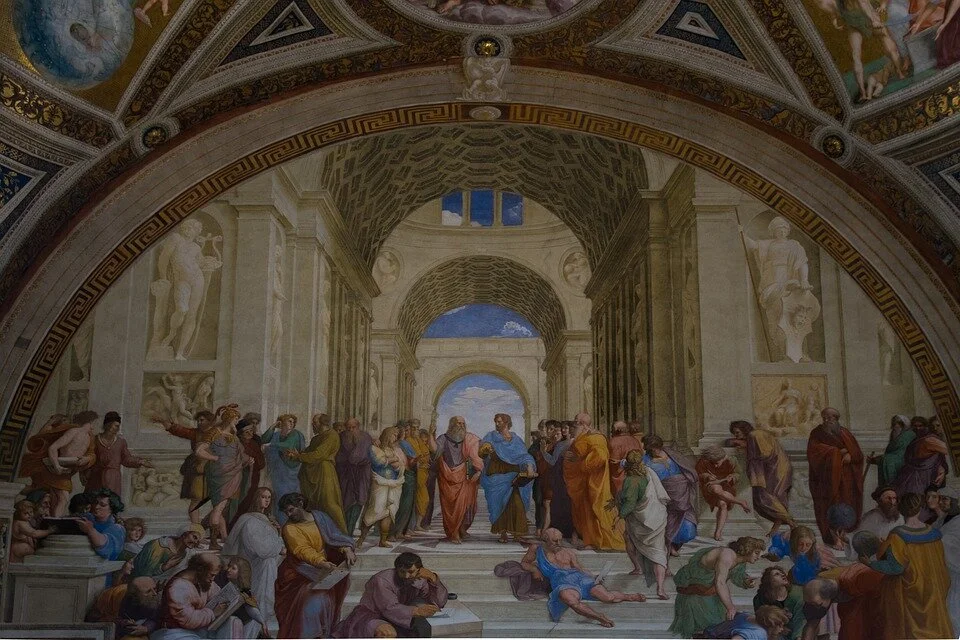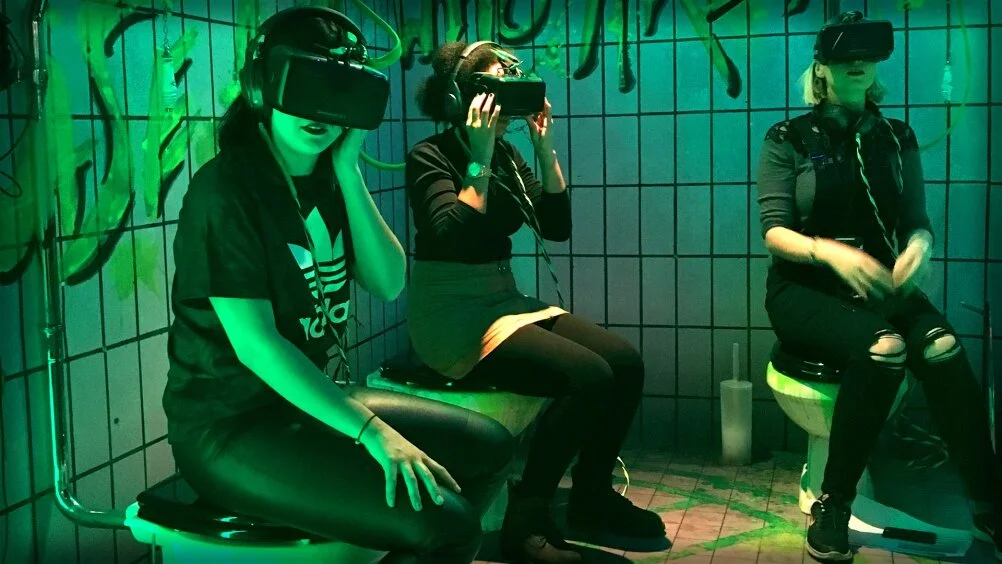More than 400 years after Shakespeare’s death, his works remain essential to theatre as we know it. Now, emerging technology is changing the way we interact it. From extended reality to artificial intelligence, audiences can now immerse themselves in performances and extract meaning from texts in ways never seen before.
How 3D Printing Is Building Itself Into Theatre
Many industries have begun utilizing 3D printing to make work easier and more efficient. This technology is even making its way into the arts. Broadway theatres, university theatre departments, and theatres everywhere are implementing 3D printing technologies to construct props, and even to build entire sets. 3D printing brings new elements of realism and creativity into theatre. It is the future of stage and set design by enabling mass customization of specific designs and independent of outside factors, such as time constraints and availability. In recent years, the market for 3D printers in theatre has shifted from DIY projects to machines for professionals.
Exploring Accessible Technology in Theatre: Captioning
According to the National Institute on Deafness and Other Communication Disorders, one in eight people in the United States ages 12+ have hearing loss in both ears. Given the prevalence of hearing loss in the United States, it is in performing arts’ organizations best interest to include solutions to make their work as accessible as possible. Disability advocates have spoken out about the need for better accessibility in the arts. No matter the medium captionins is provided, whether looking off stage, at a handheld device, or directly through the lenes of AR-supported glasses, all techonolgies are ensure that the theatre is a welcoming place for all.
Aristotle & Gaming Case Studies (Tragedy is Fun: Aristotle Revisited)
As noted in How Video Games Can Serve as an Engagement Experience, video games, particularly RPGs, are widely popular and engaging with exceptional character and plot structure. The Elder Scrolls V: Skyrim and The Witcher 3: Wild Hunt exemplify Aristotle’s model of dramatic tragedy in a modern form. These case studies prove that video games are fun, tragedy is fun, and by marrying the two, arts organizations can experiment with exciting new forms of audience engagement!
How VR and AR are Changing the World of Immersive Theater
In the ever-changing and technologically advanced age that we are currently in, there are integrations of new technologies into our lives almost everyday, and the arts are no exception. The world of theater, especially that of immersive theater, has been experiencing a technological revolution of its own thanks to advancements in and the adoption of virtual reality (VR) and augmented reality (AR). Contributor Amelia Stevens explores this in her research.
Playing with Reality in the Performing Arts: AR, VR, and MR
Immersive Experiences (AR, VR, and mixed reality) are emerging in the performing arts world. Let’s take a close look to gain a better understanding of the reasons why performing arts organizations implement these kinds of technology and discover whether it was worth the investment at this time in the technology’s development.
Getting Started with Digital Dramaturgy: What You Need to Know About Tumblr
Content is King: Matt Britten and the Broadway Briefing
Live Broadcasts and Performing Arts - Friends or Foes?
What do you think about your ticketing software?
We are conducting the 3rd National Ticketing Software Survey during the month of February. If you are interested in sharing your experience and your opinions about your software, please let us know. All those participating in the survey will receive a full copy of the report which will provide a national view as well as cluster analyses by discipline, budget size, and geographic region. The data will be useful for both organizations and vendors. Organizations will gain a better understanding of their own practices as compared to their peers and, more importantly, be able to use the findings as evidence for future technology funding campaigns. Vendors will have explicit evidence as to the needs and wants for future software design.
Research Update: The Feasibility of Open Captioning
When They Don't Notice: The Implications of Omitting the Arts from General Interests
Tom H.C. Anderson of Anderson Analytics was kind enough to respond to my request to speak to him regarding his company's survey on social media demographics. This was the survey that suggested that the arts are not important to social media users. We talked for a while, and Anderson was helpful and informative. On some level the information that he provided was a comfort, but ultimately it left me upset. It is not the survey's conclusions that imply that "social media users just don't care about the arts." It was the survey's very design which indicates that the arts aren't considered among the things that people might find interesting. Anderson explained that the respondents on the survey were online panelists who signed up to take the survey. 1,000 individuals were surveyed every month for eleven months, and then 5,000 were surveyed in May, prior to the data analysis and subsequent release. Respondents were aged 13 and up. The survey was designed to assist all Anderson Analytics clients (i.e. for-profit, commercial businesses) in target marketing via social media, and used past client-specific surveys as a loose template.
The survey was divided into three categories, each of which asked respondents to rate activities and interests based on how much time these individuals spend investigating them online.
Initially my reaction was "Great! This does not mean that these people are UNINTERESTED in the arts, but they may not consider the web as the best way to get their information." Personally, I would rate my interest in theater as quite high, but if I were to consider how "much time I investigate it online," that rating would be much lower.
Then I thought, ok, well let's look at how the arts were presented to these respondents, and see what specific interests they were rating.
Here is the extent to which art of any kind made it onto the survey. Under the heading "Hobbies" were the choices Photography and Arts and Crafts. Under the heading "Entertainment" were Music, Movies, TV and Theater/Concerts.
...And that's it.
Okay, ignore, for a moment, the upsetting fact that Theater is considered equivalent to Concerts or that Photography is only considered a "Hobby."
Where is Dance or Opera or the Symphony or Museums or Galleries or Painting...just to name a few?
Not to mention that lumping Theater and Concerts together is as absurd as if Anderson Analytics had combined, under "Health and Wellness," the headings Golf and Spa or Sex (yes, a choice on the survey) and Tennis. I doubt that Golf and Spa would ever be a category on such a survey--because people "get" that they could love golf while not being a big spa fan. Apparently, it is not so obvious that I might attend a theatrical production on a weekly basis despite not having seen a live musical concert since April of 2008. Does that mean that I have to take an average of the two "interest" levels? And if I don't, my interest in Concerts is going to rate falsely high. (As a side note, 21% of Twitter users expressed interest in Theater/Concerts compared to 16% of LinkedIn, 15% of MySpace, and 14% of Facebook users.)
It is important to bear in mind that the purpose of the survey was to benefit Anderson Analytic clients (who include Unilever and Intercontinental Hotels Group) by identifying the demographics of specific social media sites. Knowing that LinkedIn users tend to be older, have more money, and like online poker, and that bloggers and coffee-drinkers tend toward Twitter, means companies can tailor their advertising and promotional placement to best target their potential customers.
As we spoke, Anderson unintentionally summed up the most unsettling implication of the survey when he remarked that, if a certain site is most used by 18-year-olds and young adults (who have their own interests), that site isn't a great place to advertise theater. Additionally, if you want to market an opera you should use LinkedIn because the demographic is older and wealthier on average.
There it is, folks. The arts are for the older and richer. THIS is the perception (or reality) that we have to change. While yes, we absolutely need to have a better grasp on who is using social media in order to identify our target demographic and generate the best ROI, ultimately we really need to change the too-often-held belief that arts are so esoteric they doesn't count as an "interest" of the general public (unlike golf...or entertaining...or travel). Why wouldn't a hotel group want to know what level of interest potential clients have in local performances? Or whether it would be worthwhile to establish a gallery space in the hotel?
So, organizations, artists: social media isn't going to magically make audiences out of people who don't care about what we do. Doing the same thing on a different platform doesn't make the people who weren't listening before suddenly perk up and get excited.
On every level we must engage younger audiences, or generate interest in our work from the sex-having golf-playing movie-going tv-watchers. We can't force them to come to us, but we can't keep burying our heads in the sand. Let's RECOGNIZE this challenge, and be realistic about it. Things won't change overnight; but we must whittle away at the overarching lack of interest in who we are and misinformation about who we serve. The arts are for everyone. But it only counts when EVERYONE knows that.
















